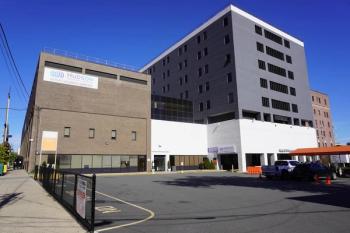
We’re overdue for a kidney care refresh | Viewpoint
Medicare policies for end-stage renal disease have had a chilling effect on innovation in patient care.
It’s 2025, and it’s time to confront a hard truth: Medicare’s kidney disease care benefit isn’t perfect, and in many ways, it’s failing the individuals it was intended to protect – those living with kidney failure, or end-stage renal disease (ESRD).
The first use of dialysis in 1945 started a revolution, and in 1972, Congress moved to ensure that all Americans with kidney failure could access this life-saving therapy, making Medicare available to any individual with the disease, regardless of their age or income.
In 2011, the Centers for Medicare & Medicaid Services (CMS) implemented the current End-Stage Renal Disease Prospective Payment System (ESRD PPS), which provided bundled payments for drugs, devices, and diagnostics required for a dialysis treatment, which were previously billed separately.
While this system has had some benefits for the approximately
The ESRD PPS was intended to control spending and improve quality, but the original legislation failed to include any mandate or mechanism to adjust the bundled rate when new treatment options are approved, essentially freezing ESRD care in the U.S. at what was current in 2011.
Since then, other patients in other countries have been able to enjoy improved innovations, which, in turn, have resulted in better mortality and quality of life compared to U.S. patients.
Responding to concerns by patients, physicians, and others in the community, but hampered by the legislative language freezing the standard of care and associated cost to 2011, CMS created the Transitional Drug Add-on Payment Adjustment (TDAPA) and the Transitional Add-on Payment Adjustment for New and Innovative Equipment and Supplies (TPNIES), which provide a two-year payment pathway for innovative drugs and technologies.
Of note, no similar pathway exists for diagnostics, leaving U.S. ESRD patients unable to access precision diagnostics that have benefited oncology and other patient types.
In practice, however, these policies have had a chilling effect on ESRD innovation. In nearly a decade, only one innovative product has been approved and received payment under TPNIES, which represents a transient two-year payment for innovative technology, but does not include capital equipment such as dialysis machines used in-center.
And while several innovative drugs have made it through the initial TDAPA payment pathway, when the initial two-year window closes, Medicare has created policies that essentially stop paying for these breakthrough drugs, which dramatically improve the patient experience and address disorders associated with ESRD treatment.
Without a clear view to long-term, sustainable reimbursement, physicians have little incentive to prescribe innovative treatments to their patients, for fear of needing to discontinue them two years later. As a result, access to many of these drugs has been severely restricted.
This temporary payment for innovation also limits incentives for research and development in ESRD treatment. Savvy investors recognize the increased risk of not making returns on investment in this space, particularly when compared to more predictable opportunities in spaces like cancer, cardiovascular, AIDS, or Alzheimer’s disease research.
As a result, the pipeline for life-sustaining ESRD drug and device innovations has diminished, and those living with ESRD – and their physicians – are increasingly left with outdated tools to fight this disease.
Unlike other disease states,
If we hope to improve the quality of life and reduce hospitalizations for the hundreds of thousands living with ESRD, something needs to change. Thankfully, bipartisan lawmakers recently introduced the Kidney Care Access Protection Act (KCAPA) (
If passed, KCAPA would both improve the payment pathways under TDAPA and TPNIES and ensure that innovative therapies are supported under Medicare Advantage, giving new ESRD treatments a fighting chance at reaching patients. This will help ensure that the Medicare program is working with innovators – not against them – to help connect new technologies with the patients who need them.
KCAPA would also establish a forecast error adjustment that ensures payments to dialysis facilities reflect the rising costs for labor, supplies, and equipment – helping to improve access to dialysis care overall.
It’s time to fulfill the promise that our nation made to those living with kidney disease. By modernizing payment policies and investing in innovation, we can give kidney care a much-needed refresh and honor our unshakeable commitment to patients nationwide.
Dr. Mahesh Krishnan is chair of Kidney Care Partners
















































